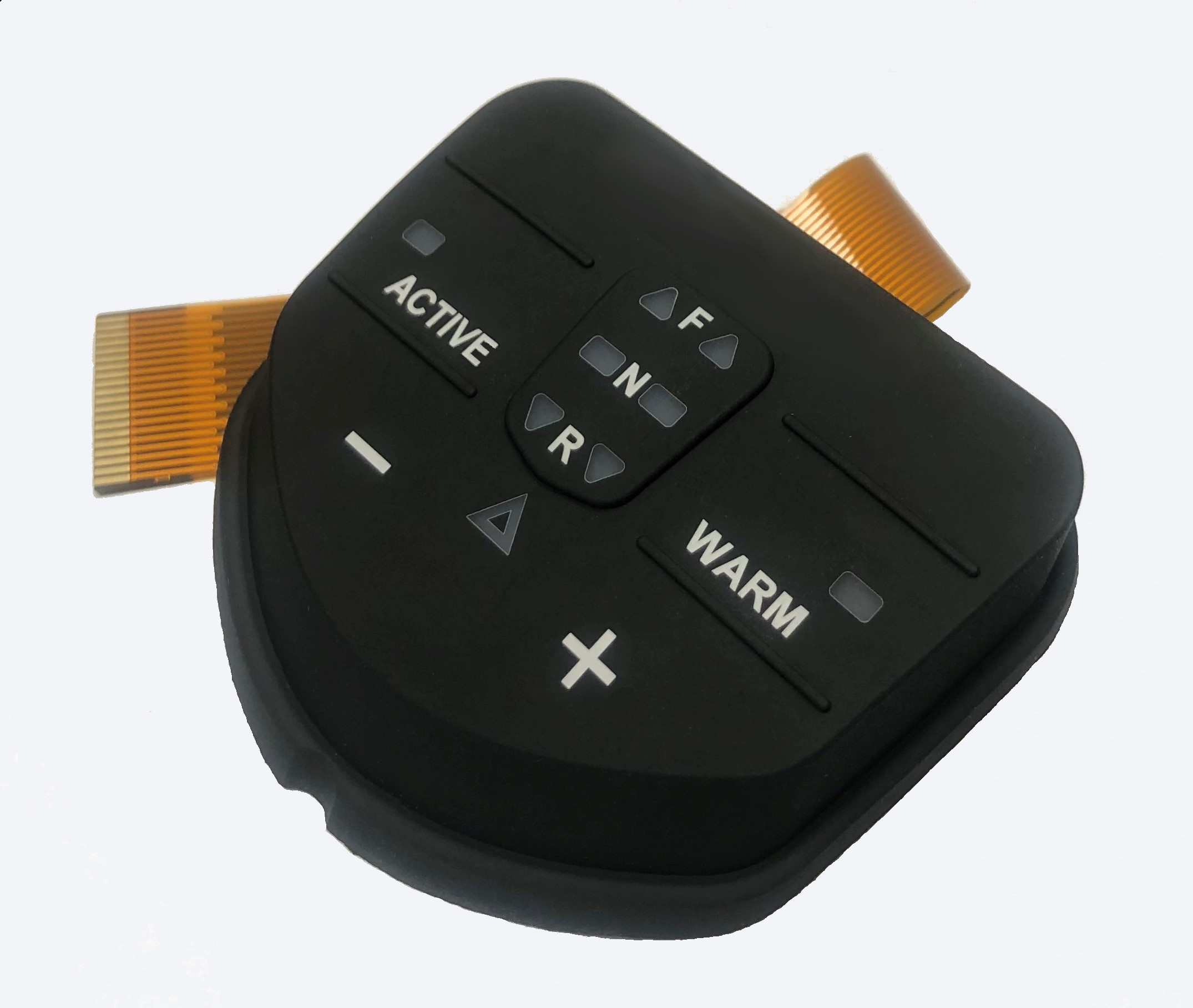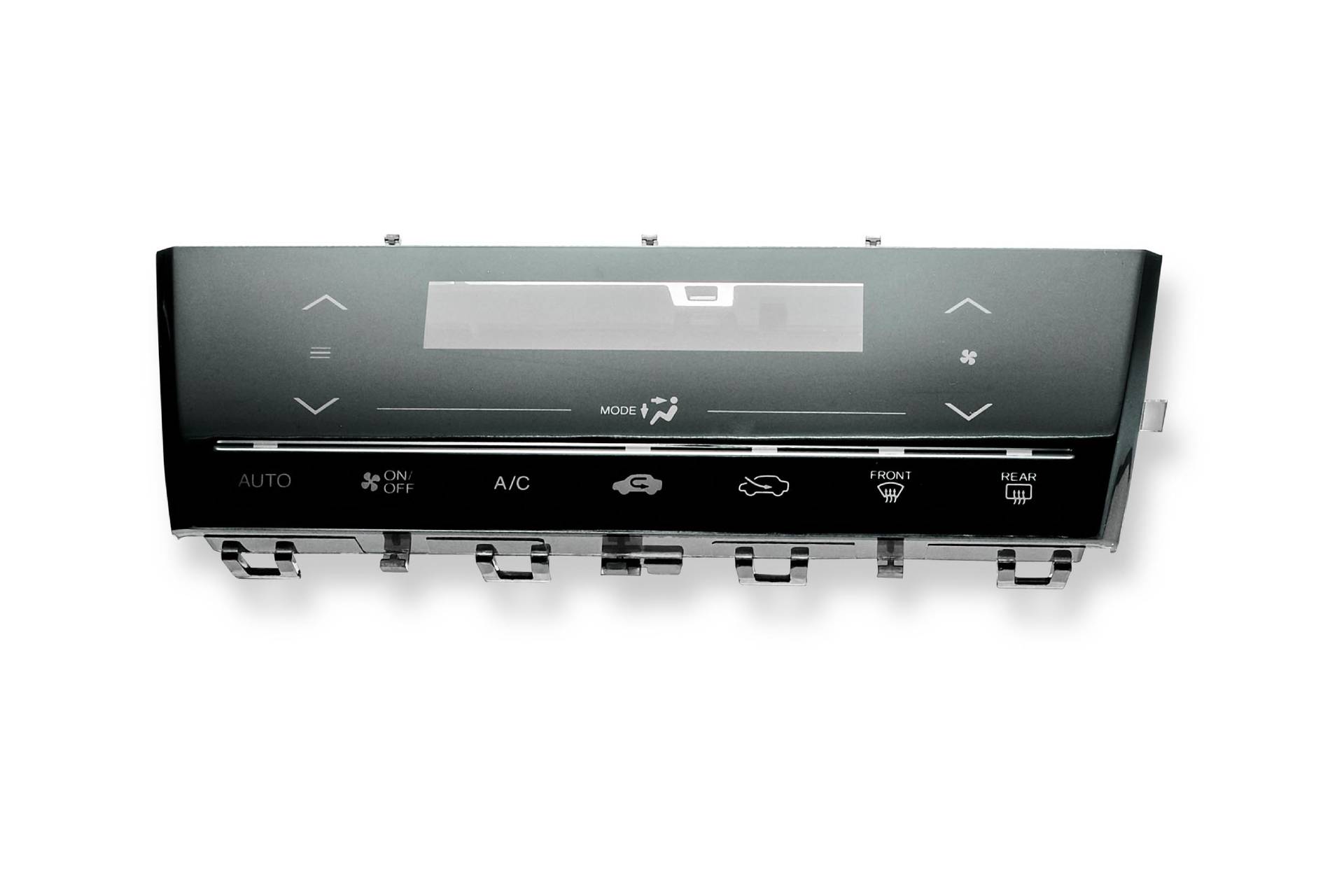A Comprehensive Guide to the Manufacturing and Handling of Rubber Keypads for Ideal Performance
The production and processing of rubber keypads play a crucial role in their efficiency and functionality. Material option, style accuracy, and innovative production strategies substantially influence their durability and effectiveness. Comprehending these components is essential for developing premium products. As numerous advancements emerge in this area, discovering their effects can expose brand-new standards for capability and user experience. What vital aspects will shape the future of rubber keypads?
Recognizing Rubber Keypads: Products and Kinds
Rubber keypads are important parts in many gadgets, using a balance of resilience and responsive feedback. These keypads are mostly made from silicone or synthetic rubber, materials selected for their versatility and durability. Silicone rubber, particularly, is preferred for its excellent temperature resistance and durability, making it optimal for numerous applications, from consumer electronics to industrial equipment.
There are several kinds of rubber keypads, including dome switch keypads, which use a dome-shaped system that gives responsive comments when pushed. Furthermore, there are additionally level keypads, which feature a smooth surface and are typically made use of in remote controls and medical gadgets. The choice of material and kind affects the keypad's efficiency, really feel, and overall individual experience. Recognizing these aspects is vital for developers and suppliers intending to create trusted and reliable interfaces in their products.
The Manufacturing Refine: From Layout to Manufacturing
The production procedure of rubber keypads includes several important stages, starting with design and ending with production. Originally, developers create comprehensive requirements and models, assuring the keypad fulfills useful and visual requirements. Computer-aided style (CAD) software application is typically used to picture the format and features before continuing.
As soon as the design is wrapped up, product choice is vital, with options usually including silicone or all-natural rubber. In the following stage, mold and mildews are produced based upon the approved layouts, which will form the keypads throughout manufacturing.
Adhering to mold and mildew development, the manufacturing stage commences, where rubber is mixed with additives to enhance efficiency. The blend is then put right into mold and mildews and based on warmth and stress, enabling it to cure and solidify.
Ultimately, the completed keypads undertake quality checks to verify they fulfill recognized requirements, followed by packaging for distribution. This all-inclusive procedure guarantees peak performance in the final product.
Key Strategies in Rubber Molding
In the domain of rubber keypads, different molding methods play a crucial function in establishing the top quality and functionality of the end product. One prevalent method is compression molding, where raw rubber is put in a heated mold and pressure is used, allowing for efficient mass production and harmony. Another significant strategy is shot molding, which includes infusing warmed rubber right into a mold, supplying greater precision and complicated shapes. Transfer molding, a crossbreed of both approaches, is additionally utilized, particularly for elaborate styles, as it integrates the advantages of both processes. In addition, liquid silicone rubber (LSR) molding is getting traction because of its versatility and resilience, making it suitable for high-performance applications. Each method possesses unique features, influencing elements such as cycle time, material waste, and production costs. Choosing the appropriate molding strategy is crucial for attaining peak performance in rubber keypads.
Surface Area Finishing and Texturing Options
Surface ending up and texturing alternatives play an essential duty in improving the responsive experience and visual charm of rubber keypads. Producers employ different strategies to create distinctive surface characteristics that impact user interaction and item layout. Common finishing techniques include matte, glossy, and satin surfaces, each supplying various aesthetic impacts and grip levels. Texturing choices, such as increased patterns, grooves, or stippling, further enhance performance by improving grip and minimizing slippage throughout usage.
In addition, details structures can be customized to meet ergonomic demands, giving convenience throughout long term usage. The option of surface finishes and textures can be affected by the designated application of the keypad, whether it be for consumer electronic devices, auto controls, or commercial gadgets. Ultimately, cautious factor to consider of these choices contributes significantly to individual contentment and general item efficiency, making them vital aspects in the design and manufacturing process of rubber keypads.
Quality Control Actions in Rubber Keypad Manufacturing
Quality assurance procedures in rubber keypad manufacturing are vital for making sure item integrity and efficiency. These steps encompass product option criteria, strenuous screening treatments, and strict last examination criteria. With each other, they create an extensive structure that assists suppliers copyright quality throughout the manufacturing process.
Product Option Requirements
Picking the appropriate materials for rubber keypads is vital, as it straight influences their sturdiness, customer, and functionality experience. Secret criteria for product selection include tensile stamina, strength, and ecological resistance. The option of rubber substance, such as silicone or thermoplastic elastomer (TPE), plays a critical role in accomplishing desired tactile feedback and durability. Additionally, variables like chemical compatibility, temperature level stability, and UV resistance need to be considered to assure maximum performance in different applications. Manufacturers should also review the simplicity of processing and cost-effectiveness of materials, balancing high quality with spending plan restraints. Eventually, the best material option not just boosts the keypad's performance but likewise adds to total product quality and consumer satisfaction.
Checking Procedures Carried Out
After determining the appropriate materials for rubber keypads, extensive screening procedures are implemented to validate that the end products satisfy sector criteria and client expectations. These treatments usually consist of mechanical screening, which assesses the sturdiness and elasticity of the rubber under different problems. Furthermore, environmental screening examines the keypads' efficiency under temperature changes, moisture, and exposure to chemicals. Electric testing verifies the keypads work properly with electronic components, validating responsiveness wikipedia reference and conductivity. Responsive responses is assessed to assure individual satisfaction. These considerable testing actions are necessary in identifying any defects or inconsistencies before automation, eventually improving the dependability and efficiency of rubber keypads in their intended applications.

Last Evaluation Standards
Detailed last assessment criteria are critical in rubber keypad production to guarantee that each device meets the defined standards for capability and appearance. This procedure commonly entails aesthetic analyses to determine any surface issues, such as discoloration or blemishes. Furthermore, tactile evaluations establish that the keypads react accurately to touch, keeping the needed degree of sensitivity. Longevity tests may additionally be conducted, imitating extended usage to confirm the longevity of the keypad under different problems. Adherence to market regulations and customer specifications is confirmed to maintain top quality assurance. By applying these strenuous examination procedures, makers can considerably reduce the risk of problems, ensuring that the end product is trusted and meets customer assumptions, inevitably improving customer complete satisfaction.
Developments in Rubber Keypad Modern Technology
As modern technology continues to evolve, technologies in rubber keypad modern technology are improving interface throughout numerous industries. One significant development is the integration of capacitive touch sensors within rubber keypads, enabling an extra versatile and responsive individual experience. This modern technology enables individuals to connect with tools with touch, enhancing performance without sacrificing the responsive feedback that rubber keypads are known for.
Furthermore, enhancements in material solutions have caused the growth of even more sturdy, weather-resistant rubber, making keypads appropriate for commercial and exterior usage. Improved printing strategies also permit high-resolution graphics and backlighting choices, boosting presence and aesthetic allure.

Furthermore, innovations in producing procedures, such as 3D printing, are enabling customized layouts and quick prototyping, enhancing manufacturing timelines. These technologies jointly add to extra easy to use and reliable rubber keypads, ensuring they satisfy the demands of modern applications while maintaining their core advantages.
Best Practices for Style and Capability
Designing effective rubber keypads calls for cautious examination of both aesthetic appeals and capability. Rubber Keypads. A well-designed keypad ought to balance ergonomic concepts with visual interest improve individual experience. Secret elements include size, form, and spacing of buttons, ensuring they are simple to press while avoiding accidental activation. Making use of contrasting textures and colors can boost visibility and tactile comments, helping individuals in identifying in between keys
In addition, the selection of products plays a necessary function; top quality rubber substances can boost longevity and resistance to wear. It is likewise vital to consider the assimilation of functions such as backlighting and personalized graphics, which can boost usability in various settings.
Lastly, prototyping and user testing are important in the style process, allowing for modifications based upon real-world best site feedback. By sticking to these finest practices, suppliers can develop rubber keypads that not just look attractive yet also fulfill the functional requirements of users successfully.
Frequently Asked Questions
Exactly how Do I Select the Right Rubber Product for My Keypad?
To choose the appropriate rubber product for a keypad, one ought to take into consideration factors such as durability, ecological resistance, tactile responses, and compatibility with the designated application, ensuring ideal efficiency and customer contentment in numerous conditions.
What Are the Ecological Effects of Rubber Keypad Manufacturing?
Rubber keypad production can lead to ecological impacts such as deforestation for natural rubber resources, pollution from chemical procedures, and waste generation. Sustainable practices and products can reduce some of these adverse impacts on communities.
Can Rubber Keypads Be Recycled or Recycled?
Rubber keypads can be reused, however the process depends on the particular products made use of in their production. Recycling them in various applications is also possible, contributing to waste reduction and promoting sustainability in manufacturing practices.
What Is the Average Life-span of a Rubber Keypad?
The ordinary life-span of a rubber keypad usually ranges from 5 to ten years, relying on usage, environmental variables, and upkeep. Routine care can prolong its performance, while extreme wear might shorten its sturdiness.
Exist Any Kind Of Health And Wellness Worries Connected to Rubber Keypad Products?
There are prospective health and wellness problems associated to rubber why not check here keypad materials, including allergies to specific chemicals and irritants utilized in manufacturing. Correct handling and understanding of material structure can minimize these threats for individuals.
There are numerous kinds of rubber keypads, consisting of dome switch keypads, which utilize a dome-shaped mechanism that supplies tactile feedback when pushed. Choosing the appropriate products for rubber keypads is vital, as it directly influences their customer, performance, and resilience experience - Rubber Keypads. After identifying the suitable materials for rubber keypads, rigorous screening procedures are carried out to validate that the final items meet market standards and consumer expectations. Rubber keypad manufacturing can lead to ecological impacts such as deforestation for all-natural rubber sources, air pollution from chemical processes, and waste generation. Rubber keypads can be recycled, however the procedure depends on the particular materials used in their manufacturing